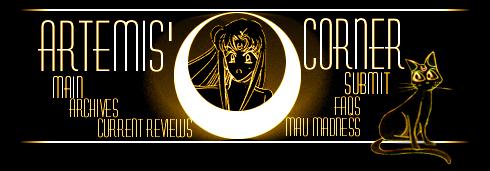
I have made a fateful decision.
There is a tendency in the WPR community out there NOT to review other WPRs. Mostly this is followed by the older WPRs...a couple of the younger ones don't seem to have a hang-up about reviewing their brothers and sisters in the WPR "business".
For a while, I went along with this tendency. There is an ample supply of non-WPR sites out there, so why bother reviewing other WPRs?
The answer is: for the same reason that other sites are reviewed, and the same reason those reviews are made public: so that you the viewer can check out the best review sites and skip the worst, so that a webpage author can take his or her work to a reputable site and expect the best service and quality they can get, and so that a WPR can see where it shines and where it can be inproved.
Also, some people prefer one style over another. Some people like to see WPRs that bash a website's flaws while explaining how to fix them. Other people feel that insulting a website author is too harsh and want the tips, and just the tips.
So, MAU Madness #8 will include the first installment of our WPR reviews, and I'll put one or two in until I figure I am done. We'll start with the top two reviewers age-wise, and yes, I'm going to review myself. You might be surprised at what I can say objectively about myself.
How Anime Saved the American Culture
Just so you know, I hate most of what youth might call culture, and I have hated it for the past ten years or so. Ever since my little brother got into Barney, I have despised what young people consider to be good entertainment.
SO, I was never much into Power Rangers, except the girls as objects of fascination. (They might be playing teenagers on the screen, but they were over 21, and I was a hormone-crazed guy in my 20s...). I despised Pokemon, and I currently despise hip-hop or rap.
However, while reading the book "Killing Monsters" a book about the psychology of various forms of violence and their effects on children, I discovered that anime has saved the American youth culture, and Pokemon must be given the most credit for it.
"Killing Monsters" is written by Gerard Jones, who was instrumental in getting Pokemon released into the US market. He's done some comic writing in the past and nowdays studies today's youth culture and its impacts on American youth.
In his book, Jones explains that adults tend to see childrens' actions through adult views of the world, shaped by an adult's share of world experiences. The assassinations of the mid to late 1960s, and more recently, th rash of high-profile violence, has led many adults to want to shelter their children from violence. This means no toy guns, no toy swords, no rough play...you might grow up to be violent, or to use a gun or a sword.
What adults tend to forget is that children need to be allowed to play and they need to be able to build a fantasy world that they own, that they control. Now, the child brings a toy gun into his fantasy world and he "owns" the gun. (I'm using "he" and "his" meaning gender neutrals at this point.) The child owns the gun, he gains a bit of power from having the toy, and a certain amount of fear is removed.
Parents tend to go nuts, and they'd point to the above statements. Owning a gun? Becoming less fearful of a gun? Gaining power from a gun? But think about what the message parents usually send tells the kids: usually the kid comes away more afraid of whatever the adult is reacting to, and they become afraid to express their feelings on the subject.
Jones said one other thing that I found interesting. He said that kids tend to take a violent event or object, such as the attacks on September 11, 2001, or a gun, and they take it into their fantasy world, and they play with it until they feel safe with their own feelings. Jones noted in his surveys, which take the form of going to classes and asking children to draw comic strips of what they are feeling, he noted that for a time after September 11th, children drew pictures of planes going into buildings, and they wanted to play "Fight the Terrorist". Jones noted that these trends died out soon as the children became less frightened about the events of that day.
The same thing can be said of school shootings, and here is where Pokemon comes in. See, the Pokemon craze hit JUST after the shootings at Columbine High School, in Littleton, Colorado. Pokemon is a rather flashy, action-oriented universe where trainers go out and capture various Pokemon monsters and train them to better use their powers. The thing is that Pokemon is actually kinda violent, but that violence at THAT time, acted as a vent for a youth culture that was about to come apart dealing with a huge rush of anger, fear, and anxiety over what had happened. Through the experience of Pokemon, children were able to express whatever they were feeling, because there are aggressive Pokemon, and Pokemon that need caring for, and for virtually any emotional need a child has, there is a Pokemon for it.
I could go on for quite some time about this. Gerard Jones had written an excellent book that is actually a decent read, and it is very insightful into the psychology of a child's world. Some of the things he says, I find also happen to adults.
While I don't care much for Pokemon, at least I can appreciate it better for what it did for the children of America when it was most needed.
Artemis
MAU Madness #1: John Rocker and Yam Head
|
